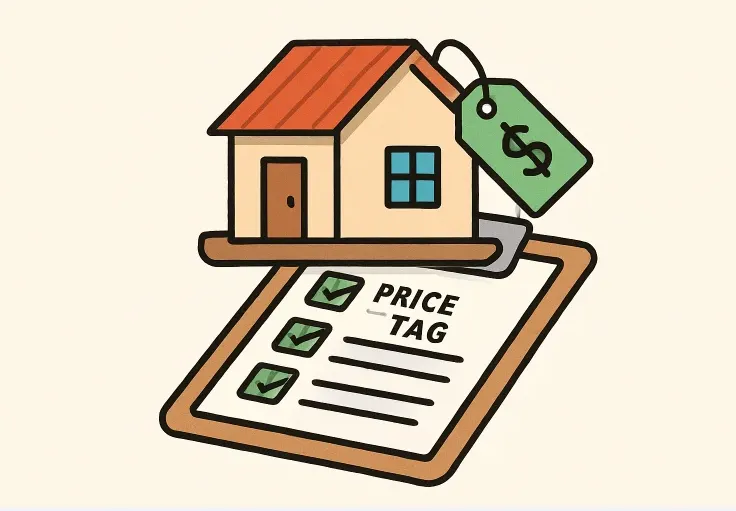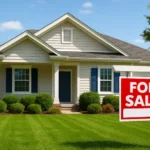Key Takeaways
- Proper pricing is crucial for maximizing profits and minimizing time on the market during a for-sale-by-owner transaction.
- Accurate data, local comparables, and an objective assessment of your property will help you avoid common pricing mistakes.
- Understanding market trends and being willing to adjust your strategy are essential when selling without an agent.
- Professional guidance and reputable resources can help you confidently set and refine your asking price.
Why Accurate Pricing Matters in a For-Sale-By-Owner Scenario
Setting the right price for your home is one of the most influential steps in the for-sale-by-owner process. A well-priced home attracts more buyer attention, generates stronger offers, and is likelier to sell quickly. To maximize your chances, consider strategies to sell today. Overpricing, however, can result in your listing languishing on the market and may even force you to accept a much lower offer. Underpricing, on the other hand, can deprive you of well-earned equity. In fact, research shows that many owner-sold properties fetch lower sale prices due to inaccuracies in setting the starting price. Owners often struggle with emotional attachment to their property, which can cloud judgment and lead to inflated valuations. To make data-driven decisions, leverage real market insights and recent sales rather than relying on subjective opinions.
Evaluating Local Market Conditions
Understanding your local market is the foundation of accurate pricing. Real estate markets differ not only from city to city but also from neighborhood to neighborhood. Key factors such as inventory levels, buyer demand, and the pace of recent sales will significantly influence the value of your home. Reviewing recent comparable sales—“comps”—within a close radius of your property allows you to identify market trends and align your expectations with what buyers are willing to pay. Making use of up-to-date housing market data is essential.
Assessing Your Home’s Unique Features and Condition
No two homes are the same, even within the same neighborhood. Carefully list all upgrades, renovations, and standout amenities that could sway a buyer’s decision. Factors like a modern kitchen, energy-efficient appliances, updated bathrooms, and smart-home technology can justify a higher asking price. Conversely, outdated features or deferred maintenance, such as old roofing or worn interiors, may require price adjustments.
Square footage, lot size, number of bedrooms and bathrooms, and home layout should all be weighed alongside curb appeal and recent improvements. To ensure you haven’t overlooked critical details, consulting independent home experts can be invaluable. Their knowledge of current buyer preferences and neighborhood comparables can help you fine-tune your price point.
How to Find and Analyze Comparable Sales (Comps)
Comparable sales, or “comps,” refer to homes near yours that are similar in size, layout, and features and have closed within the past few months. Ideally, select comps within a half-mile of your property and narrow the window to three to six months for the most accurate reflection of current values. Look closely at finished square footage, lot size, recent upgrades, and unique amenities. Not all comps are created equal—context matters.
Common Pricing Strategies for Selling Without an Agent
1. Start Competitively
Price your home based on the best available market data from the outset. Homes initially priced right typically attract more buyers and sell closer to their asking price.
2. Price Just Below a Round Number
If your ideal price is around $400,000, consider listing at $399,900 to boost online views and buyer interest. This pricing tactic can trigger more search matches and generate emotional appeal.
3. Use Price Banding
Identify pricing gaps in your neighborhood and position your home within bands with maximum buyer demand or minimum competition.
4. Leave Room for Negotiation
Savvy buyers expect to negotiate. Setting your price with a negotiable buffer encourages offers, but excessive padding can turn buyers away before negotiations begin.
Preparing for a Price Adjustment: When and Why
If your home receives little interest within the first two weeks on the market, reevaluate your pricing strategy. Key indicators include a lack of showings, minimal inquiries, or direct feedback from potential buyers and their agents regarding your price being too high. In such situations, respond proactively—adjust your price promptly to reignite buyer interest instead of waiting and risking market “staleness.” Market climates can change rapidly. Assessing traffic and feedback regularly allows you to remain flexible and stay ahead of evolving buyer expectations.
The Role of Professional Appraisals and Valuations
A professional appraisal delivers an impartial third-party estimate of your house’s value. Appraisers consider a wide set of criteria, including recent comps, market trends, and the unique characteristics of your property. While hiring an appraiser involves a fee, it can give you extra negotiating power and provide credibility for your asking price—particularly valuable for unique or high-value properties. While appraisals offer professional insight, remember that markets move fast; combining formal valuations with recent active listings and evolving neighborhood data is wise.
Final Tips for Setting the Right Price for a Successful Sale
Before going live with your listing, double-check that all data—comparable sales, market reports, and your property’s features—has been thoroughly assessed. Ask for feedback from individuals who can approach the price objectively. Free pricing calculators and checklists from resources can provide useful benchmarks and peace of mind. Success as a for-sale-by-owner seller depends on realistic pricing, a data-backed approach, and adaptability as market conditions shift. With the right preparation and mindset, you can set a price that draws buyers, accelerates offers, and delivers the full value of your home.



